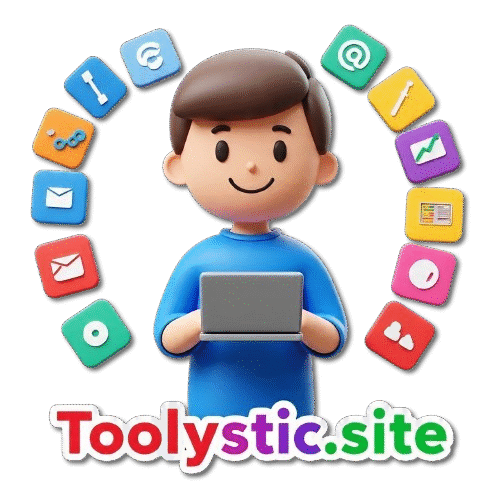Debt Reduction Advice That Really Works (And Why Most People Get It Wrong)

Look, I’m gonna level with you—trying to find decent debt reduction tips is like trying to find a needle in a haystack. Except the haystack is on fire. And the needle is also on fire. Everything’s on fire.
I learned this the hard way about seven years ago when I was basically hemorrhaging money. Credit cards maxed out, car payment eating half my paycheck, student loans laughing at me from the corner. Every time I checked my bank account, I’d get that sick feeling in my stomach, you know? Like when you realize you left the stove on, except the stove is your entire financial life.
The advice online? Absolute garbage, mostly. One guru told me to cut out Starbucks and boom, I’d be a millionaire. Another wanted me to eat rice and beans for every meal like I’m training for some kind of poverty Olympics. And don’t even get me started on those sketchy debt consolidation companies that basically wanted to rob me legally.
Here’s what nobody tells you: getting out of debt doesn’t require you to live in a cardboard box or become a financial monk. You just need real numbers, a solid game plan, and the guts to actually follow through. Let me break down what actually worked for me—and what’ll work for you too.
Step One: Face the Music (Yeah, It’s Gonna Hurt)
So this is the part everyone hates. I mean really hates. Before you can figure out how to get out of debt, you gotta know exactly how deep you’re in it.
I remember the day I finally sat down to do this. Had my laptop, a strong drink, and a pile of bills I’d been shoving in a drawer for months. My hands were literally shaking. Pathetic, right? But that’s how scared I was to see the real number.
Make Your Debt List (No Hiding Allowed)
Grab whatever works for you—spreadsheet, notebook, the back of a pizza box, I don’t care. Just write down every single thing you owe:
- All your credit cards (yes, even the ones you pretend don’t exist)
- Car loans
- Mortgage or back rent
- Personal loans from banks, family, that sketchy guy from college
- Student loans (ugh)
- Medical bills that keep haunting you
- Past due anything—utilities, phone, that parking ticket from 2022
- Money you borrowed from friends and keep “forgetting” about
For each debt, you need three numbers:
- What you owe total
- Minimum payment each month
- Interest rate (this is where they’re screwing you)
Now add it all up. Not the interest rates, but everything else.
Ready for this? When I did mine, the number was $47,832. I literally had to run to the bathroom. Not even joking. Seeing that number made everything way too real, way too fast.
But you know what? That moment of pure terror was exactly what I needed. Because you can’t fight an enemy you refuse to look at.
Finding Out Where All Your Money Disappears To
Alright, now that you know what you owe, let’s figure out what you’re actually working with. This is the budgeting for debt repayment phase, and honestly? It’s almost worse than the first part.
Add Up Your Income (Be Real About It)
Write down everything coming in:
- Your actual paycheck (after taxes, not that fantasy number on your offer letter)
- Side hustle money
- Freelance gigs
- Any other consistent income
- Emergency cash you could grab if things got desperate (but leave your 401k alone, seriously)
Don’t include money you might make or that one time your grandma gave you $100 for your birthday. We’re dealing in reality here.
Track Where Every Dollar Goes (This Is Gonna Sting)
Okay, deep breath. Time to list literally everything you spend money on.
And before you start lying to yourself—don’t. I spent $340 a month on DoorDash when I first tracked this. Three hundred and forty dollars! On food I didn’t even enjoy half the time! I just didn’t feel like cooking.
Your list should include:
- Housing (rent, mortgage, insurance, all that fun stuff)
- Utilities and phone
- Groceries
- Gas and car stuff
- Subscriptions (dude, I had seven streaming services. SEVEN. I was watching like two shows total)
- Eating out (be honest)
- Entertainment and fun
- Clothes and personal stuff
- Medical expenses
- That random crap you buy at Target at 11 PM because you’re sad
Look, I’m not here to judge your life choices. But I am saying you can’t manage personal debt if you don’t know you’re dropping $60 a month on a gym you haven’t been to since January.
My buddy Marcus thought he was pretty responsible with money. Then he tracked his spending for a month and realized he was spending almost $500 on random Amazon purchases. Stuff he didn’t need, didn’t remember ordering, and half the time didn’t even open. It was like a shopping blackout situation.
The Come-to-Jesus Moment: What’s Left?
Take your income. Subtract all your expenses. What’s left over? That’s your debt-killing budget.
If that number is zero? We got work to do.
If it’s negative? Okay, don’t panic. Seriously, breathe. This just means we gotta cut some stuff.
Where You Can Actually Cut (Without Dying Inside)
Here’s the thing—you don’t have to go full minimalist monk and give up everything that makes life worth living. That’s the advice that makes people quit after three days.
Instead, look for stuff you’re paying for that doesn’t actually make you happy.
My cuts looked like:
- Ditched cable – Saved $125/month (I literally only watched Netflix anyway)
- Started meal prepping on Sundays – Saved around $250/month on lunch and random food runs
- Cancelled that gym membership I used twice – $65/month back in my pocket
- Switched to a cheaper phone plan – $45/month saved
- Stopped buying coffee out every single day – Okay look, I still got coffee sometimes, but going from every day to twice a week saved me like $80/month
That’s about $565 a month I found. And honestly? My life wasn’t any worse. If anything, I felt better because I wasn’t wasting money on stuff I didn’t care about.
But here’s what I didn’t cut—my Friday night pizza with friends. My Spotify. My annual camping trip. The things that actually mattered to me? Those stayed. Because you gotta live a little, even when you’re getting out of debt.
The Two Methods Everyone Swears By (And Why They Both Work)
Now we’re getting to the actual debt repayment strategies. There’s basically two approaches, and people get weirdly passionate about which one is “better.”
Spoiler: they both work. You just gotta pick the one that matches your personality.
The Debt Snowball Method (For People Who Need Quick Wins)
This is where you tackle your smallest debt first, no matter what the interest rate is.
Here’s the play:
- Line up all your debts from smallest to biggest
- Pay the minimum on everything
- Throw every extra penny at the smallest debt
- Once it’s gone, take that payment and roll it into the next one
- Keep going like a debt-destroying avalanche
Why it’s awesome: You get to cross stuff off the list fast, which feels amazing and keeps you motivated.
I used this method, and man, when I paid off that first credit card (it was only $680, but still), I felt like I could fly. Called my sister immediately, basically shouting into the phone. She thought I’d won the lottery or something. Nope, just paid off one tiny debt, and it was the best feeling ever.
That momentum? It’s real. And it kept me going when things got hard.
The Debt Avalanche Method (For the Math Nerds)
This approach goes after the highest interest rate first, which mathematically saves you the most money.
The breakdown:
- List debts by interest rate, highest to lowest
- Minimums on everything
- Attack the highest interest debt with all your spare cash
- Move to the next highest rate when you kill the first one
- Rinse and repeat
Why it’s solid: You’ll reduce debt fast by paying less interest overall. It’s the smartest move financially.
The downside? If your highest interest debt is also your biggest balance, it might take forever to see that first win. And that can mess with your head.
My friend Sarah used this method and saved like $3,000 in interest compared to the snowball approach. But she also almost quit twice because it took her nine months to pay off that first debt. She’s way more disciplined than me though.
Which One Should You Do?
Real talk? Pick whichever one you’ll actually stick with.
If you need those dopamine hits from quick wins, do the snowball. If you’re okay with delayed gratification and want to optimize the numbers, do the avalanche.
The worst strategy is the one you quit after three weeks because you picked the “right” method that doesn’t match how your brain works.
Don’t Fall for These BS Traps
Let me tell you about the time I almost made things so much worse.
I was about $40k in debt, drowning, desperate. Saw an ad for a debt consolidation company that promised to “cut my debt in half.” Sounded amazing, right?
Thank God I did research first. Turns out they wanted to charge me $1,500 upfront, then negotiate with my creditors (which I could do myself for free), and their “success” would trash my credit score for years. Cool, cool, cool.
Watch Out for This Stuff
Debt consolidation loans: Look, these can work, but only if you’re not gonna be stupid about it. I’ve watched too many people consolidate their credit cards, feel all relieved, then max those cards right back out within a year. Now they’ve got the consolidation loan AND new credit card debt. Don’t be that person.
Understanding debt consolidation benefits matters, but it’s not some magic wand.
Only paying minimums: This is how credit card companies get rich and you stay broke forever. On a $5,000 balance at 18% APR, if you only pay the minimum? You’ll be paying that sucker for like 22 years and spend thousands extra in interest. That’s insane.
Ignoring the high-interest stuff: That payday loan at 400% APR or credit card at 27%? Every day you wait is costing you money. Real money. It’s literally bleeding you dry.
“I got a raise so I can afford more stuff now”: No. Wrong. That raise goes straight to debt until you’re free. I made this mistake and it set me back six months.
Tools That Actually Help (And Don’t Cost You Anything)
You don’t need some fancy $200/month financial advisor to pay off credit card debt. There’s so much free stuff out there if you know where to look.
If you want free AI tools for budgeting, tracking debt, or even just staying organized with your finances, seriously check out www.Toolystic.site. I found it last year and it’s been clutch. No hidden fees, no credit card required, just actually useful tools that help you get your life together.
Your Actual Game Plan (Let’s Do This)
Alright, enough theory. Time to make your personal plan of attack.

Rule #1: No. More. Debt.
I’m serious. Cut up your cards if you have to. Freeze them in ice. Give them to your mom. Whatever it takes.
You absolutely cannot dig yourself out while simultaneously digging deeper. It’s like trying to fill a bathtub with the drain open.
Rule #2: Pick Your Fighter
Snowball or avalanche. Choose one. Right now. Don’t overthink it.
Rule #3: Automate Everything You Can
Set up auto-pay for at least the minimums on everything. This saved my butt so many times when life got crazy and I forgot about a payment. No late fees, no credit score damage, just one less thing to stress about.
Rule #4: Find More Money (Get Creative)
Beyond cutting expenses, you gotta hustle a bit:
- Sell your old crap – I made $1,200 selling stuff I didn’t even remember I owned
- Side hustle – I started doing freelance writing on weekends, made an extra $400-800/month
- Ask for a raise – Scary, but it works. I got 7% just by asking
- Use your skills – My buddy Dave started fixing computers for neighbors, made an extra $300/month easy
Every single extra dollar is one more dollar toward freedom.
Rule #5: Celebrate the Wins (Seriously)
When you pay off a debt, do something to mark it. Doesn’t have to be expensive—order your favorite pizza, take a day trip somewhere free, do a happy dance in your kitchen at 2 AM. Whatever.
I used to call my best friend every time I paid something off and we’d both yell about it for five minutes. Sounds dumb, but those little celebrations kept me going when I wanted to give up.
The After-Party: Staying Out of Debt
So you’ve clawed your way out of debt. Amazing. Now what?
Because here’s the truth nobody tells you—getting out is hard, but staying out is where most people fail.
Build That Safety Net
The second you’re debt-free, keep “paying yourself” that debt payment. But now it goes into savings. Start with $1,000 for emergencies, then work toward 3-6 months of expenses.
This is what keeps you from going right back into debt when your car breaks down or you need a new water heater or life just decides to smack you around a bit.
Change How You Think About Money
The habits that got you into debt? Yeah, those gotta go.
New rules:
- Live below your means (not at them, below them)
- Want vs. need – Master this difference
- Save up for big purchases instead of financing everything
- Experiences over stuff – Turns out that $800 TV doesn’t make you happy, but that weekend trip with friends does
Keep Tracking Everything
Even after you’re out of debt, keep doing that budget thing. It’s like brushing your teeth—you gotta keep doing it even after the cavities are fixed.

Real Talk: You’re Gonna Make It
Look, I get it. You’re sitting there right now feeling overwhelmed, maybe a little hopeless, thinking “this is too much, I can’t do this.”
I felt that way too. For like six months straight. There were nights I’d lie awake doing math in my head, trying to figure out how I was gonna make it all work.
But here’s what I learned: you don’t have to be perfect at this. You just have to keep showing up.
Some months I could only scrape together an extra $50 for debt. Other months I could throw $600 at it. It didn’t matter. Forward is forward.
I messed up too. Had to use my emergency fund twice. Forgot about a bill and got a late fee. Made dumb purchases I regretted. But I kept going.
And three years and four months after I started, I made that last payment. Sat in my car in the bank parking lot and just cried. Happy tears, relieved tears, “I can’t believe I actually did it” tears.
You can do this too. You’re not special (sorry), and I’m not special. We’re just people who decided to stop accepting debt as normal and did something about it.
Start today. Not Monday. Not next month. Today.
Write down those numbers. Face the truth. Pick your method. Take that first step.
Future you—the one who’s debt-free and actually sleeping at night—is gonna thank you so much.
Now go get ’em.
Need Free Tools to Help You Actually Pull This Off?
Real talk—you need good tools if you’re serious about this financial freedom thing. Tracking everything manually gets old fast, and most budgeting apps either cost money or are trying to sell you something.
That’s why I’m a huge fan of www.Toolystic.site. It’s basically a treasure chest of free AI-powered tools that can help with budgeting, debt tracking, planning, and a bunch of other useful stuff. No credit card nonsense, no “free trial” that auto-charges you, just actually free tools that work.
Whether you’re trying to organize your budget, calculate payoff timelines, or just need some help staying on track, these tools make the whole process way less painful.
And hey, if you need daily motivation to keep your head in the game, definitely follow these pages for killer motivational content:
- www.facebook.com/Aiuncle
- www.facebook.com/empowerbywaqas
- www.tiktoke.com/empowerbywaqas
- www.instagram.com/empowerbywaqas
- www.instagram.com/ai_uncle
- www.dailymotion.com/empowerbywaqas
These accounts drop fire content regularly—the kind of quotes and stories that hit different when you’re grinding through the hard days. Sometimes you just need that one post that reminds you why you’re doing this.
Bottom line: Financial freedom isn’t just about the numbers in your bank account. It’s about taking back control, sleeping better at night, and not having that constant knot of anxiety in your stomach. You deserve that. And you absolutely can make it happen.
Now quit reading and go start your debt list. Seriously. Right now. I’ll wait.

